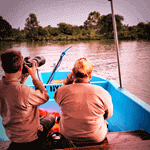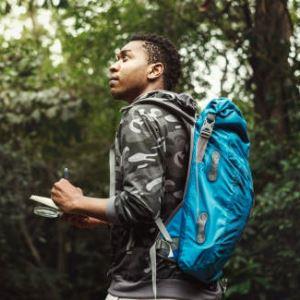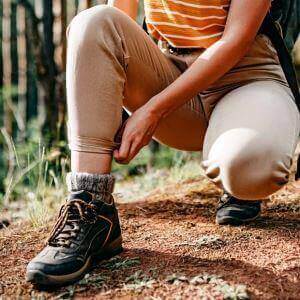 Wildlife photography volunteer safaris in Kenya offer an unforgettable opportunity for UK visitors to combine adventure, conservation, and creativity. These immersive trips allow travellers to actively contribute to wildlife preservation while honing their photography skills in some of Africa's most iconic landscapes. Kenya, home to diverse ecosystems and abundant wildlife, attracts amateur and professional photographers alike who are eager to capture images of lions, elephants, rhinos, and more in their natural habitats. British travellers often choose structured volunteer programs that include guided safari drives, hands-on conservation tasks, and photography workshops led by experts. Destinations such as the Maasai Mara National Reserve, Amboseli National Park, and the Laikipia Plateau provide an ideal backdrop for stunning wildlife images. These regions are teeming with biodiversity and offer exceptional lighting conditions during the golden hours of early morning and late afternoon perfect for capturing striking wildlife portraits. A major advantage for UK participants is the accessibility of support services tailored to their needs. Many programs partner with UK-based travel coordinators who assist with bookings, pre-trip orientation, and flight arrangements. Once in Kenya, volunteers are welcomed by English-speaking guides, local conservationists, and experienced wildlife trackers who ensure safety and enhance the learning experience. Accommodations are typically in eco-lodges or comfortable tented camps, offering a close-to-nature experience without sacrificing comfort. Participants not only get the chance to photograph Kenya’s extraordinary fauna, but also play an important role in conservation. Tasks may include monitoring animal movements, setting up camera traps, and documenting species behavior. This blend of purpose and passion enriches the travel experience, transforming it from a simple photography tour into a meaningful journey that supports wildlife preservation. Preparation is key for anyone planning to embark on these adventures. UK travellers should bring suitable photography gear, including a DSLR or mirrorless camera, a telephoto lens (preferably 300mm or more), and backup memory cards and batteries. Neutral-colored clothing, high-SPF sunscreen, and insect repellent are also essential. Many programs provide guidance on packing lists and offer equipment recommendations to help participants make the most of their experience. Kenya volunteer safari photography trips from UK not only appeal to photographers seeking incredible images, but also to individuals driven by a desire to contribute to environmental conservation. These safaris go beyond sightseeing; they cultivate awareness, foster cross-cultural understanding, and create lasting memories through the lens of a camera. With each shutter click, UK volunteers play a small but vital part in safeguarding Kenya’s rich natural heritage for future generations.
Wildlife photography volunteer safaris in Kenya offer an unforgettable opportunity for UK visitors to combine adventure, conservation, and creativity. These immersive trips allow travellers to actively contribute to wildlife preservation while honing their photography skills in some of Africa's most iconic landscapes. Kenya, home to diverse ecosystems and abundant wildlife, attracts amateur and professional photographers alike who are eager to capture images of lions, elephants, rhinos, and more in their natural habitats. British travellers often choose structured volunteer programs that include guided safari drives, hands-on conservation tasks, and photography workshops led by experts. Destinations such as the Maasai Mara National Reserve, Amboseli National Park, and the Laikipia Plateau provide an ideal backdrop for stunning wildlife images. These regions are teeming with biodiversity and offer exceptional lighting conditions during the golden hours of early morning and late afternoon perfect for capturing striking wildlife portraits. A major advantage for UK participants is the accessibility of support services tailored to their needs. Many programs partner with UK-based travel coordinators who assist with bookings, pre-trip orientation, and flight arrangements. Once in Kenya, volunteers are welcomed by English-speaking guides, local conservationists, and experienced wildlife trackers who ensure safety and enhance the learning experience. Accommodations are typically in eco-lodges or comfortable tented camps, offering a close-to-nature experience without sacrificing comfort. Participants not only get the chance to photograph Kenya’s extraordinary fauna, but also play an important role in conservation. Tasks may include monitoring animal movements, setting up camera traps, and documenting species behavior. This blend of purpose and passion enriches the travel experience, transforming it from a simple photography tour into a meaningful journey that supports wildlife preservation. Preparation is key for anyone planning to embark on these adventures. UK travellers should bring suitable photography gear, including a DSLR or mirrorless camera, a telephoto lens (preferably 300mm or more), and backup memory cards and batteries. Neutral-colored clothing, high-SPF sunscreen, and insect repellent are also essential. Many programs provide guidance on packing lists and offer equipment recommendations to help participants make the most of their experience. Kenya volunteer safari photography trips from UK not only appeal to photographers seeking incredible images, but also to individuals driven by a desire to contribute to environmental conservation. These safaris go beyond sightseeing; they cultivate awareness, foster cross-cultural understanding, and create lasting memories through the lens of a camera. With each shutter click, UK volunteers play a small but vital part in safeguarding Kenya’s rich natural heritage for future generations.
Key Information for UK Visitors Joining Kenya Safari Volunteer Programs
| Topic | Details for UK Visitors |
|---|---|
| Best Time to Visit | June to October (dry season and best wildlife sightings) |
| Duration of Volunteer Safaris | Typically 1 to 4 weeks |
| Visa Requirement | E-visa required before arrival |
| Health Tips | Yellow fever vaccine recommended; malaria prophylaxis advised |
| Photography Gear | DSLR/mirrorless, telephoto lens, backups, filters |
| Accommodation | Tented camps or eco-lodges with full board |
| Local Support | English-speaking guides and on-site conservation teams |
Best Wildlife Photography Safari Volunteering Options in Kenya
Wildlife photography volunteer safaris in Kenya provide an ideal setting for UK travellers seeking to merge conservation efforts with a passion for photography. These programs not only offer the chance to observe Africa's iconic wildlife up close but also allow volunteers to contribute to vital conservation work. UK participants find these opportunities rewarding as they go beyond traditional tourism and offer a deeper connection to the environment and local communities. UK visitors are welcomed into carefully structured itineraries that typically include guided game drives, fieldwork with conservationists, and hands-on camera training sessions. Destinations such as the Maasai Mara, Tsavo, and Samburu are among the most popular for these experiences, offering breathtaking scenery and unmatched access to wildlife. With support from experienced guides and photographers, volunteers gain the skills and knowledge needed to capture powerful wildlife imagery while understanding the ecological challenges facing these species. Accommodations range from eco-lodges nestled in reserves to mobile tented camps that bring travellers even closer to the heart of nature. Meals, transportation, and daily activities are often included, ensuring a seamless and immersive experience. UK participants benefit from pre-departure briefings, packing guides, and travel assistance from agencies familiar with both the UK and Kenyan travel landscapes. In addition to photography, volunteers often assist with data collection, habitat assessments, or awareness campaigns. These tasks not only enhance their understanding of wildlife but also contribute to long-term protection strategies. Programs are designed to be educational, ethical, and impactful, with strict adherence to conservation guidelines and animal welfare principles. UK visitors wildlife photography and conservation safaris in Kenya stand out as a transformative way to travel, offering a blend of exploration, education, and ecological contribution. These safaris are designed for those who wish to deepen their photography expertise while actively engaging in meaningful conservation work. As participants document Kenya’s extraordinary biodiversity, they also become part of a global movement to protect endangered species and habitats. The immersive nature of these programs allows travellers to witness daily life in the wild, from predator-prey interactions to migratory movements across the savannah. Many programs also include opportunities to visit local communities, adding a rich cultural layer to the experience. With guidance from professional photographers and conservationists, UK volunteers not only improve their technical camera skills but also gain a deeper understanding of the challenges facing wildlife in East Africa. Kenya’s vast landscapes, including savannahs, wetlands, and forests, provide a visually captivating canvas for photography. Whether tracking lions at dawn or capturing elephants silhouetted at sunset, every moment becomes a frame-worthy memory. These safaris foster personal growth, environmental awareness, and global connectivity, making them one of the most rewarding travel choices available to UK visitors today.
Where Can UK Travellers Join Photography Volunteer Safaris in Kenya?
Kenya is a dream destination for UK travellers seeking wildlife photography volunteer safaris that combine conservation, adventure, and skill-building. With its sweeping savannahs, iconic wildlife species, and vibrant culture, the country provides an unmatched backdrop for meaningful travel. These programs allow participants to support conservation efforts while learning from professionals and capturing stunning photos of Africa’s incredible biodiversity. UK-based travellers benefit from organized, English-speaking programs that offer logistical support and tailored itineraries in top wildlife destinations.
- Maasai Mara National Reserve: One of Africa's most famous reserves, Maasai Mara is known for its abundance of big cats and the Great Migration. Volunteers can photograph dramatic predator-prey moments and help with wildlife tracking projects. The expansive plains and golden sunsets make it a perfect canvas for stunning safari photography.
- Amboseli National Park: Amboseli is best known for its herds of elephants and spectacular views of Mount Kilimanjaro. UK volunteers often assist in elephant behavior studies while enjoying unmatched photographic opportunities, especially during sunrise when mist drifts across the open plains.
- Laikipia Conservancies: This region hosts innovative conservation programs protecting endangered species like Grevy’s zebras and black rhinos. Volunteers participate in anti-poaching patrols, ecological surveys, and camera trap setup, gaining hands-on experience in remote, photo-worthy landscapes.
- Tsavo East and West National Parks: These parks offer a rugged terrain rich in wildlife diversity. UK participants can explore volcanic hills, red-dusted elephants, and ancient baobab trees. Conservation work includes habitat monitoring and assisting rangers, while photography highlights include dramatic scenery and rare species.
- Samburu National Reserve: Located in northern Kenya, Samburu is home to unique wildlife like gerenuks, Grevy’s zebras, and reticulated giraffes. Photography here offers a contrast to southern parks, and volunteers can support local community projects tied to conservation.
By choosing these locations, UK travellers can engage in ethical wildlife photography, contribute to environmental efforts, and enjoy authentic experiences far beyond standard tourist safaris. Each reserve offers distinct biodiversity and landscapes, ensuring a varied and rewarding volunteer adventure.
Kenya Safari Photography Tips for UK Wildlife Volunteers
Capturing breathtaking safari photos in Kenya is a dream for many UK visitors, and the key to achieving this lies in thorough preparation and local insight. With Africa's distinctive lighting and wildlife movements, planning ahead ensures a more rewarding photography experience. UK travellers should understand how wildlife behaves in natural habitats and adapt their techniques accordingly to capture powerful, ethical images. Beyond the technical aspect, wildlife photography in Kenya is also about patience, awareness, and respect for the environment. Volunteers are encouraged to bring versatile gear, including a DSLR or mirrorless camera, a reliable telephoto lens (300mm or greater), and lens cleaning tools. A bean bag or window mount is essential for stable shots from safari vehicles. Plenty of memory cards and batteries are vital due to limited charging opportunities in remote areas. UK visitors should wear muted colours like khaki, beige, or olive to blend in with the surroundings and avoid scaring wildlife away. Timing plays a pivotal role. Early mornings and late afternoons are ideal due to softer lighting and higher animal activity. Volunteers should anticipate the movement of animals and prepare to shoot quickly as moments in the wild are often fleeting. Knowing how to adjust ISO, aperture, and shutter speed on the fly is incredibly useful. Local guides and conservationists offer tremendous value by sharing their expertise on animal behaviour and habitat patterns. They can position volunteers in ideal locations, enhancing the chances of remarkable photography. These experts also help ensure that ethical guidelines are followed, minimizing human impact on the animals being observed. Workshops and on-site training often accompany these volunteer programs, allowing UK participants to learn from professional wildlife photographers. Sessions might cover composition, lighting, storytelling, and post-processing tips, further enriching the experience. Capturing action shots of lions hunting or elephants marching against the savannah backdrop becomes more than just photography it becomes a form of visual conservation. Volunteers may also be assigned tasks that integrate photography with conservation, such as taking ID shots of animals for monitoring, documenting poaching signs, or capturing footage for awareness campaigns. This practical application reinforces the importance of their role and adds purpose to every click of the shutter. Participating in African wildlife photo tours with volunteer work from UK provides not only personal fulfilment but also contributes meaningfully to global conservation efforts. The fusion of photography and volunteerism cultivates empathy, advocacy, and appreciation for Kenya’s extraordinary biodiversity. Kenya offers UK wildlife photography volunteers an unforgettable classroom. It combines stunning visuals, expert mentoring, and a purpose-driven mission. By preparing well and immersing fully, UK visitors can return home not just with beautiful images, but with stories that inspire action and support conservation.
How Can United Kingdom Visitors Capture Stunning Safari Photos?
For visitors from the United Kingdom, capturing remarkable safari photos in Kenya means more than just snapping images it's about being present, prepared, and engaged with the surrounding environment. Kenya's wildlife and natural light offer an exceptional canvas, but understanding animal behavior and anticipating moments is just as crucial as technical camera skills. Volunteers must respect the animals and habitats they photograph, ensuring that their presence supports rather than disrupts conservation goals. Photography on safari begins with the right gear. UK volunteers should pack a DSLR or mirrorless camera, a 300mm or longer lens, a sturdy bean bag or vehicle mount, and backup batteries and memory cards. Since you're often on the move in open vehicles or rough terrain, portability and durability matter. Neutral-toned clothing is a must to blend in, as bright colours can alarm animals. High-quality binoculars are also helpful when scouting distant subjects before bringing the camera into play. Timing is everything. The golden hours at dawn and dusk not only produce magical lighting but also coincide with peak wildlife activity. Photographers must be ready to shoot at a moment’s notice, which means knowing your camera settings intuitively. Fast-moving animals like cheetahs or birds in flight require split-second decisions, and missing a moment can mean missing the shot of a lifetime. Volunteers in Kenya benefit immensely from working alongside local guides and conservationists. These experts offer insights into animal movement, habitat preferences, and behaviors that aren't obvious to newcomers. They can also ensure safety and help position vehicles strategically for the best photographic angles without intruding on wildlife. It’s not uncommon for guides to anticipate where a lion might walk next or where elephants may gather at a watering hole. Equally valuable are the photography workshops often included in volunteer programs. These sessions cover practical topics like composition, light management, storytelling through photos, and ethical photography principles. Photographers learn to frame subjects with the landscape, use shadows effectively, and portray animal emotion and context all of which elevate a good photo to a great one. Many assignments integrate photography with conservation work. Volunteers may take identification photos of key species, document behavioral data, or contribute images to educational campaigns. These responsibilities add depth and meaning to each photo, reminding volunteers that they are not just observers but active participants in conservation. Wildlife conservation and photography volunteer projects in Kenya give UK visitors the chance to build technical skills, support vital ecological efforts, and witness unforgettable moments in nature. These projects are structured to combine practical involvement in environmental preservation with in-depth learning about wildlife photography. From tracking endangered species to capturing powerful animal portraits, volunteers become active participants in both science and storytelling. Volunteers often find themselves immersed in daily conservation work, such as assisting with anti-poaching patrols, maintaining camera traps, or documenting species behavior through images and field notes. This hands-on approach fosters a stronger connection to Kenya’s natural world and allows participants to develop a more meaningful understanding of their role in conservation. At the same time, photography becomes more than an art it turns into a tool for education, advocacy, and change. With professional guidance from wildlife experts and photographers, UK participants gain valuable mentorship and improve their technical skills in real-world settings. Each day in the bush brings new lessons and challenges, encouraging adaptability, creativity, and awareness. These experiences inspire a lifelong commitment to environmental protection, proving that travel can be both purposeful and transformative.
Travel Advice and Packing Guide for UK Wildlife Safari Volunteers
 Planning a wildlife photography volunteer safari in Kenya requires thoughtful preparation, especially for visitors travelling from the UK. From health precautions to essential photography gear, being well-prepared will ensure a more enjoyable and productive experience in the field. This journey is not just about travel and exploration but also about participating meaningfully in conservation efforts. Having the right mindset and equipment can make the difference between a good trip and a life-changing adventure. Start with the essential documentation: a valid UK passport with at least six months before expiry, a tourist e-visa for Kenya (which should be applied for online before departure), and comprehensive travel insurance that includes emergency medical evacuation. Health precautions are equally important. UK travellers are strongly advised to take antimalarial medication and be vaccinated against yellow fever, especially if they plan to visit multiple regions within Kenya. Packing should be functional and light. High-SPF sunscreen, insect repellent, a reusable water bottle, and a wide-brimmed hat are all essential for outdoor conditions. Neutral-coloured clothing such as beige, olive, or khaki helps you blend into the natural environment. Avoid bright colours, which can scare away wildlife. Kenya's climate can vary significantly, so packing layers is important. Early mornings can be surprisingly cold while afternoons can become very hot. Photography equipment should be carefully considered. A DSLR or mirrorless camera with a telephoto lens (ideally 300mm or more) is ideal for capturing distant wildlife. Bring backup memory cards, spare batteries, and a cleaning kit to maintain your gear in dusty environments. A bean bag or clamp for camera support inside safari vehicles will also help stabilize shots. Binoculars will come in handy for wildlife spotting before photographing. Universal power adapters are necessary for UK travellers to charge equipment in Kenya. Many lodges and camps rely on solar power, so charging time may be limited. Bring a power bank or solar charger as a backup. Volunteers should also carry a lightweight daypack for daily excursions to keep essential items handy, including water, snacks, and lens protection. Beyond packing, UK tourists are encouraged to research local customs and wildlife etiquette. Respect for the environment and local communities is essential. Whether interacting with guides or engaging with conservation teams, ethical behaviour ensures the integrity of the experience. Participating in ethical wildlife safari photography in Kenya for UK tourists is about more than just taking great photos. It involves supporting conservation, building cultural awareness, and making a positive impact. Being well-prepared ensures you can focus on the experience capturing the majesty of Kenya's landscapes and wildlife while contributing meaningfully to their preservation.
Planning a wildlife photography volunteer safari in Kenya requires thoughtful preparation, especially for visitors travelling from the UK. From health precautions to essential photography gear, being well-prepared will ensure a more enjoyable and productive experience in the field. This journey is not just about travel and exploration but also about participating meaningfully in conservation efforts. Having the right mindset and equipment can make the difference between a good trip and a life-changing adventure. Start with the essential documentation: a valid UK passport with at least six months before expiry, a tourist e-visa for Kenya (which should be applied for online before departure), and comprehensive travel insurance that includes emergency medical evacuation. Health precautions are equally important. UK travellers are strongly advised to take antimalarial medication and be vaccinated against yellow fever, especially if they plan to visit multiple regions within Kenya. Packing should be functional and light. High-SPF sunscreen, insect repellent, a reusable water bottle, and a wide-brimmed hat are all essential for outdoor conditions. Neutral-coloured clothing such as beige, olive, or khaki helps you blend into the natural environment. Avoid bright colours, which can scare away wildlife. Kenya's climate can vary significantly, so packing layers is important. Early mornings can be surprisingly cold while afternoons can become very hot. Photography equipment should be carefully considered. A DSLR or mirrorless camera with a telephoto lens (ideally 300mm or more) is ideal for capturing distant wildlife. Bring backup memory cards, spare batteries, and a cleaning kit to maintain your gear in dusty environments. A bean bag or clamp for camera support inside safari vehicles will also help stabilize shots. Binoculars will come in handy for wildlife spotting before photographing. Universal power adapters are necessary for UK travellers to charge equipment in Kenya. Many lodges and camps rely on solar power, so charging time may be limited. Bring a power bank or solar charger as a backup. Volunteers should also carry a lightweight daypack for daily excursions to keep essential items handy, including water, snacks, and lens protection. Beyond packing, UK tourists are encouraged to research local customs and wildlife etiquette. Respect for the environment and local communities is essential. Whether interacting with guides or engaging with conservation teams, ethical behaviour ensures the integrity of the experience. Participating in ethical wildlife safari photography in Kenya for UK tourists is about more than just taking great photos. It involves supporting conservation, building cultural awareness, and making a positive impact. Being well-prepared ensures you can focus on the experience capturing the majesty of Kenya's landscapes and wildlife while contributing meaningfully to their preservation.
What Should UK Volunteers Bring for a Kenya Photography Safari?
Preparing for a Kenya photography safari as a UK volunteer requires more than just excitement it demands smart and thoughtful packing. Kenya's natural beauty and diverse wildlife await, but being ready for its unique conditions ensures you make the most of this life-changing opportunity. Begin with the essentials. Your passport should be valid for at least six months beyond your travel dates, and you must apply for a Kenyan e-visa in advance. Travel insurance is non-negotiable, especially one that includes emergency evacuation. It’s wise to consult your GP about recommended vaccines and antimalarial medications well before departure. Clothing should be light, breathable, and in neutral tones like khaki, green, or beige. Avoid bright colours or busy patterns, as they can startle animals. Kenya's weather shifts from cool mornings to hot afternoons, so dress in layers. A wide-brimmed hat, sunglasses, and a scarf to protect from dust will serve you well. For photography, a DSLR or mirrorless camera with a telephoto lens (minimum 300mm) is highly recommended. Include lens cleaning tools, extra memory cards, batteries, and a bean bag or clamp for camera stability during drives. A laptop or external drive for backups can be valuable, especially on longer programs. You'll also need basic safari gear: insect repellent, sunscreen, a reusable water bottle, and a lightweight daypack. Binoculars are handy for wildlife spotting, while a notebook is great for documenting animal behaviour or photographic notes. Bring a headlamp or torch, particularly if you’re staying in camps with limited electricity. Power adapters for UK plugs and a power bank or solar charger ensure your devices stay operational. Many lodges run on solar, and charging time may be limited. If you wear prescription glasses or contacts, bring extras and cleaning supplies. Don’t forget your sense of adventure, patience, and respect for nature. Volunteers must approach wildlife with caution and humility, following ethical guidelines. Your actions contribute to broader conservation goals, making your presence impactful beyond just photography. Research your host organization’s recommendations carefully. Many provide detailed packing lists specific to their region and time of year. Staying informed helps you pack smart and travel with confidence. With the right gear, mindset, and preparation, UK volunteers can look forward to an unforgettable and rewarding experience in Kenya's wild landscapes. These trips are more than just opportunities to observe Africa’s iconic wildlife they offer a deep dive into conservation, cultural exchange, and hands-on learning. Volunteers are immersed in daily routines that blend photography with ecological stewardship, offering insight into the delicate balance of life on the savannah. The emotional and intellectual connections formed during these safaris often stay with travellers for a lifetime. Whether capturing a lioness at sunrise or assisting with animal tracking, every moment in the wild contributes to a broader understanding of Kenya’s conservation challenges. The friendships forged with fellow volunteers, guides, and local communities further enrich the journey. For many, these experiences ignite a lifelong passion for protecting the natural world, turning a single trip into a springboard for ongoing involvement in environmental causes back home in the UK and beyond.
Frequently Asked Questions for UK Safari Photography Volunteers in Kenya
Embarking on a safari photography volunteer experience in Kenya is a thrilling journey for UK travellers. These immersive trips offer a unique blend of wildlife observation, hands-on conservation work, and skill development in photography. Whether you're an amateur or seasoned photographer, the opportunity to capture Africa's most iconic species while contributing to their preservation is incredibly rewarding. Planning a trip like this often leads to questions from UK tourists, especially those new to conservation travel. Below are some of the most common and important questions, explained to help future volunteers feel confident and prepared.
- What Is the Best Time for a Safari Photography Volunteer Trip? The best time to visit Kenya for photography and volunteering is during the dry season, from June to October. Wildlife is easier to spot around water sources, and clear skies provide better lighting for photography. This period also coincides with the Great Migration in the Maasai Mara, offering world-class photo opportunities. Travel during this time helps you avoid heavy rain, which can make roads inaccessible and limit both visibility and wildlife activity.
- Do I Need Any Special Permits for Wildlife Photography in Kenya? Most UK travellers only need a Kenyan e-visa to participate. However, specific parks or conservancies might require additional permits for professional-grade equipment. If you're volunteering through a structured program, they often arrange permits on your behalf. Always check with your organization before departure. If you're carrying long lenses or drones, inquire about extra clearance or documentation.
- What Camera Equipment Should I Bring from the UK? Bring a DSLR or mirrorless camera with a long telephoto lens (minimum 300mm), extra batteries, memory cards, a cleaning kit, and a bean bag for stability in vehicles. A laptop or external storage device is recommended for backups. Don’t forget UK-to-Kenya power adapters and a portable charger, as electricity in camps may be limited. High-quality binoculars and a lightweight tripod can further enhance your experience.
- Can I Charge My Devices While on Safari? Yes, but power can be limited depending on your accommodation. Many eco-lodges and camps rely on solar energy, and electricity may be available only during certain hours. Bring a power bank or solar charger and keep your batteries fully charged whenever possible. Avoid draining devices unnecessarily during the day when charging may not be available.
- Will I Have Internet Access While Volunteering? Internet access is limited in remote areas. While some lodges offer basic Wi-Fi, it may be slow or unreliable. Safaris are best enjoyed offline, but you can purchase a local SIM card with a data plan upon arrival in Kenya for occasional updates. Be prepared to disconnect and immerse yourself in the wildlife and conservation experience.
- Is It Safe to Travel Alone as a UK Safari Photography Volunteer? Yes, it is generally safe, especially through trusted programs that include airport pickup, accommodation, guides, and 24/7 support. Kenya is a popular destination for solo UK travellers. That said, you should always follow local advice, stick with group activities, and avoid venturing into unfamiliar areas alone. Travel insurance with emergency coverage is also essential.
- How Do Volunteer Projects Support Conservation in Kenya? Volunteers assist with wildlife monitoring, camera trap setups, data collection, and educational outreach. Photography volunteers may contribute images for research, social media campaigns, and awareness materials. These efforts support conservation initiatives by providing visual documentation, increasing public engagement, and assisting local rangers in tracking animal movements and identifying threats like poaching.
- Can I Participate Without Extensive Photography Experience? Absolutely. Many UK travellers join with basic knowledge and leave with enhanced skills. Volunteer programs often include photography workshops tailored for all levels. You’ll receive mentoring on topics like lighting, framing, and storytelling. Your passion and curiosity are more important than your technical ability at the start.
Kenya wildlife photography volunteer safaris are more than just travel opportunities. They offer a purposeful escape, placing you amidst some of the world’s most spectacular landscapes and wildlife. UK visitors benefit from English-speaking support, structured itineraries, and meaningful conservation impact. These safaris teach patience, creativity, and respect for nature qualities that extend far beyond the camera. Participants develop a profound connection to their environment, often discovering a deeper appreciation for the role they play in conservation efforts. Whether you're capturing an elephant in golden-hour light, observing lion cubs at play, or lending a hand to anti-poaching patrols, every day presents a new and meaningful challenge. These programs inspire a spirit of adventure and curiosity, while fostering lifelong skills in photography, teamwork, and environmental awareness. The friendships formed with fellow volunteers and the insights gained from conservationists and local communities enhance the depth of the experience. For UK travellers looking to grow as photographers, contribute to a worthy cause, and return home with more than just pictures, Kenya offers the perfect blend of purpose and passion in one unforgettable journey.



